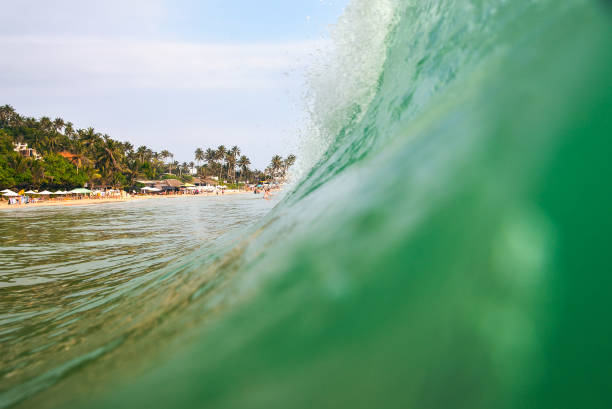
Dee Dee Kuruneru pointed to the grayish line permanently imprinted eight feet up the wall of his nearly demolished seaside house.
“That’s how high the water was,” he said. “It stayed there for ten minutes.”
That extraordinary watermark was the legacy of the tsunami that overwhelmed Dee Dee’s hometown of Galle, a bustling community on the southwest coast of Sri Lanka, the teardrop-shaped island that adjoins India. On December 26, 2004, a massive 9.0 earthquake off Indonesia sent shock waves across the Indian Ocean. What arrived in Galle on an otherwise picture-perfect Sunday morning was not just a wave, but miles and miles of vertically displaced water. Its 25-foot crest inundated everything and everyone in its path.
Dee Dee, alerted by the screams of neighbors, grabbed his wife, two sons, and four other extended family members. Fleeing their home, they saw water rushing down the street from two directions.
Dee Dee’s family had less than sixty seconds to climb to the highest point in their neighborhood, the unfinished second story of a nearby house. The two-dozen people who reached that bare slab were saved from drowning.
Thousands of others were not so fortunate. Sri Lanka took a direct hit from the worst global natural disaster in more than a century. Houses, businesses, and human lives in the crowded and impoverished region of Galle were simply swept away. A train engulfed on the tracks just north of the town became a watery tomb for more than 1500 passengers.
The tsunami triggered an unprecedented international response.
Among those who ventured to Sri Lanka was a ten-member Habitat for Humanity work team from central Indiana. I was privileged to be part of that group. We took four flights, crossed eleven time zones, and traveled to within a few degrees of the equator to help some of Galle’s poorest residents rebuild.
Our group discovered that every standing structure, like Dee Dee’s, had a lasting watermark from the disaster.
I stood with him inside his house, which was so extensively damaged he and his family had to live elsewhere. He pointed to the second-floor concrete slab of the house next door. His neighbor had poured it just three days before the tsunami.
“That man was Jesus for us,” Dee Dee sighed.
I didn’t think I had heard him right. “Dee Dee,” I said, “aren’t you a Buddhist?” Dee Dee replied, “Yes, I am a Buddhist. But I know who Jesus is. Jesus is the one who saves.”
Despite all the missteps of his followers, Jesus still retains a remarkable global reputation.
We can give ourselves to a lifetime of religious rituals, philosophical speculations, or boundary-pushing personal adventures. But in the end, Jesus is the one who saves.
For Dee Dee and his family, that meant ten crucial minutes of safety.
For the rest of us, who aren’t likely this week to face the drama of a natural disaster, it might mean a surge of hope when we find ourselves battling thoughts like these:
I’ll never feel happy again.
I have no idea how I can ever retire.
I feel so discouraged about the state of the world.
I haven’t the faintest clue what to do with my life.
I see no hope for my family.
But Jesus is the one who saves.
And in this world and the next he promises never-ending spiritual security.
That’s a reality that can never be swept away.
